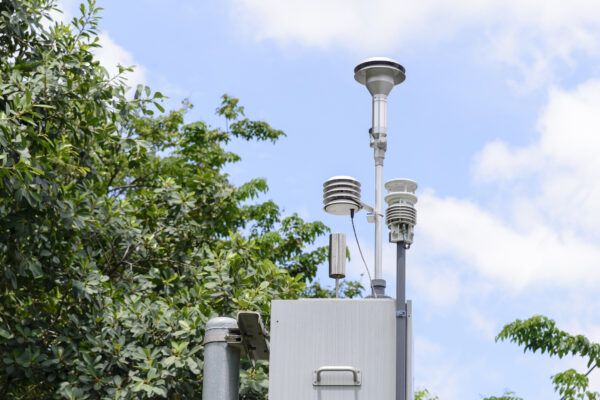Presentation of team work
The problem
Estimates from the World Bank show that the vast majority of people breathing unsafe air are in low- and middle-income countries, where 5.5 billion people are exposed to hazardous particulate matter (PM2.5) levels. Roughly 64.5% of these people reside in lower-middle-income countries, while 4.4% reside in low-income countries.
Poor air quality is exacerbated by the challenges air quality managers in the global south face. These include:
- a lack of reliable, real-time air quality data
- limited technical capacity and trained personnel
- an inability to access analytical tools that can help manage air quality.
The solution
CanAIRy Alert is a global partnership funded by Clean Air Fund and led by World Resources Institute’s (WRI) Ross Center for Sustainable Cities. The partnership addresses challenges faced by air quality managers in participating cities by providing decision-relevant web-based tools and training. CanAIRy Alert’s Air Quality Forecast tool builds upon work already completed by WRI through its previous collaboration with NASA-GMAO, to provide reliable, accessible air quality forecast data and visualizations to resource-constrained cities facing air quality challenges.
The Air Quality Forecast tool provides a one-to-five-day station-level air quality forecast to cities, so they can anticipate unsafe levels of pollution, communicate with health officials and stakeholders, and manage local interventions more effectively. The forecasts combine outputs from NASA’s global Goddard Earth Observing System Composition Forecast (GEOS-CF) with air quality data from cities’ monitoring stations, any available low-cost sensor networks and other global forecasts. CanAIRy Alert is also developing its Pollution Insights tool in collaboration with Mexico Autonomous University (UNAM) and University of Saint Louis researchers, which uses satellite data to identify sources of pollutants and quantify emissions by creating visualizations of the sources.
The Pollution Insight tool is wonderful because it gives you an idea of how your pollution is generated. Our main focus using this tool is to evaluate what our mitigation measures are achieving.
Alex Ndyabakira, Lead of Air Quality Management Team, Kampala Capital City Authority
WRI found that providing the CanAIRy Alert tools is not enough. Air quality practitioners from the global south need training and support to be able to adapt the tools to their local context. Feedback from users in diverse settings also makes the tools better.
WRI is providing a platform for knowledge sharing and capacity building through a Community of Practice (CoP) for Latin America and Africa that has been meeting for more than a year online. Members of the CoP from Bogotá, Monterrey Metro, Mexico City, Queretaro, Leon, Jalisco, Nairobi and Kampala were given the opportunity to attend a multi-day workshop organized by WRI Mexico in June 2023 to share how they are using the tools. They also met with researchers who refining the tools. They were joined by additional participants from the new Southeast Asia CoP who will take part in the next phase of project development. You can find the data tools and CoP webinars on CanAIRY Alert’s new website.
I am very glad to have a chance to observe, listen to, and learn about various [air quality] innovations — particularly how to monitor and forecast air quality as done by other countries.
Rahmawati Mustari Mustam, Head of Subdivision of Environmental Monitoring, Jakarta Environment Agency
The impact
As part of the development of the CanAiry Alert tools, cities like Monterrey and Bogotá have already started seeing positive impacts of access to air quality forecast information. In Monterrey, local government started using the tool to inform citizens and decision-makers ahead of high pollution events, including using the information in briefings for the city’s governor. Similarly, in Bogotá, the forecasts have become a crucial part of their modeling, complementing the information they already had to create a more complete picture of the city’s air quality.
In the next phase of the project, CanAIRy Alert will focus on further developing the tools and getting more cities involved. The Air Quality Forecast tool will be tested in Kampala and Nairobi to better integrate low-cost sensor network data to improve the forecast visualizations. In addition, the Pollution Insights tool will be piloted in Nairobi so it can more accurately take into account the city’s specific meteorological and geographical conditions.
Moving forward, through the CanAIRy Alert web application, air quality forecasting at the station level will be available for multiple cities – some of which do not currently have access to air quality forecast information – including Guadalajara, Leon, Salamanca, Silao, Quito, Sao Paolo, Quito, Addis, Jakarta, Kampala, Kigali, Accra and Nairobi.
Authors: Yasmín Agustín Durán, Beatriz Cardenas, Beth Elliott, Daniel Ibanez, and Ana Cecilia Perales – World Resources Institute.

